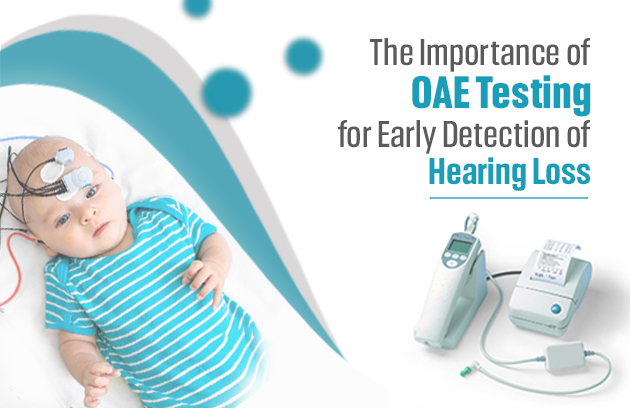- February 7, 2024
- admin
- Comment: 0
- blog, OAE Hearing Test
In the realm of audiology, early detection of hearing loss is paramount. One of the key tools in identifying potential issues is OAE testing. Otoacoustic Emissions (OAE) testing is a non-invasive method used to assess the functionality of the cochlea, the inner ear’s sensory organ responsible for hearing. This article delves into the significance of OAE testing in the early detection of hearing loss and its implications for individuals of all ages.
Understanding OAE Testing
Otoacoustic Emissions (OAE) testing measures the sounds produced by the inner ear in response to external stimuli, typically presented in the form of clicks or tones. These emissions occur when the outer hair cells of the cochlea vibrate in response to sound. By analyzing these emissions, audiologists can assess the integrity of the cochlea and identify any potential hearing impairments.
How OAE Testing Works
During OAE testing, a tiny probe is placed into the ear canal, emitting sounds while simultaneously recording the emissions generated by the cochlea. The process is quick, painless, and does not require active participation from the individual being tested, making it particularly suitable for infants and young children.
Early Detection of Hearing Loss
Early detection of hearing loss is crucial for several reasons. Firstly, it allows for prompt intervention and management, which can significantly mitigate the impact of hearing impairment on language development, academic performance, and social interactions. Secondly, identifying hearing loss early can prevent potential complications or delays in speech and cognitive development.
Importance in Infants and Children
In infants, the ability to hear is vital for speech and language acquisition. Undetected hearing loss can lead to delays in these critical developmental milestones. OAE testing enables healthcare providers to screen newborns for hearing loss shortly after birth, ensuring that any issues are addressed promptly.
Benefits for Adults
While hearing loss is often associated with aging, it can affect individuals of all ages. For adults, early detection of hearing loss can improve communication, enhance quality of life, and reduce the risk of social isolation and depression. OAE testing serves as a valuable tool in identifying hearing loss in its early stages, allowing for timely intervention.
Advantages of OAE Testing
OAE testing offers several advantages over traditional audiometric assessments:
Non-Invasive
Unlike other forms of hearing tests that require the individual to respond to auditory stimuli, OAE testing is entirely non-invasive. This makes it suitable for individuals of all ages, including infants and individuals with cognitive or developmental disabilities.
Quick and Efficient
OAE testing is quick, typically lasting only a few minutes per ear. The efficiency of the test makes it feasible for use in mass screening programs, such as newborn hearing screenings conducted in hospitals.
Objective Results
The results of OAE testing are objective, providing clear indications of cochlear function. This eliminates the potential for subjectivity in interpretation and ensures accuracy in identifying hearing loss.
Conclusion
OAE testing plays a pivotal role in the early detection of hearing loss across all age groups. By assessing cochlear function through non-invasive means, OAE testing enables healthcare providers to identify hearing impairments promptly and implement appropriate interventions. Early detection not only improves outcomes for individuals with hearing loss but also contributes to overall health and well-being.

